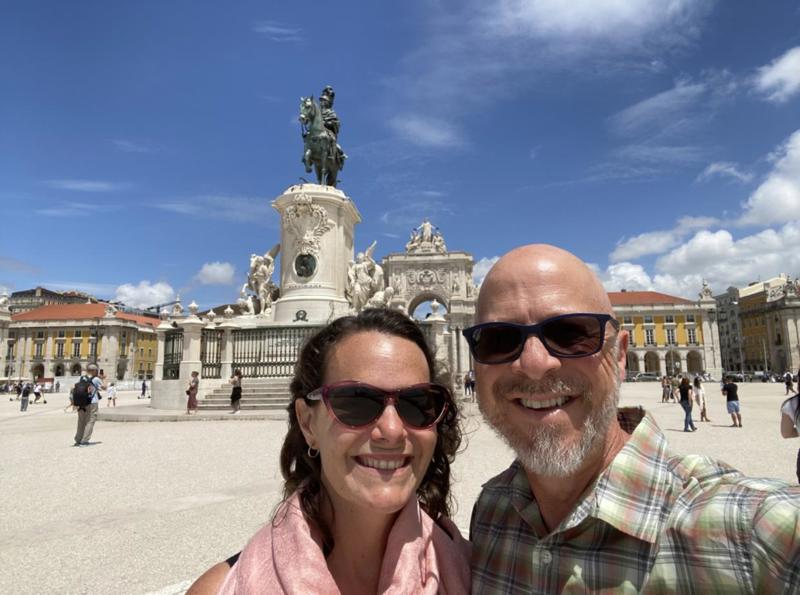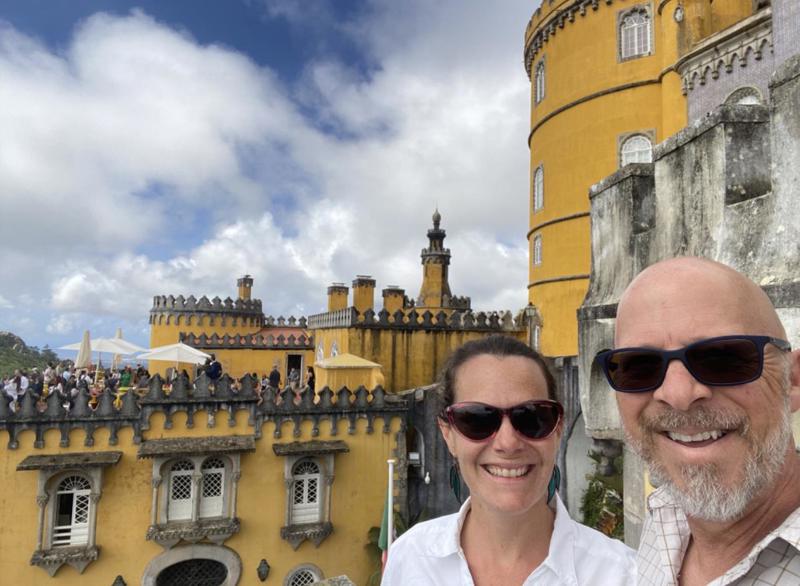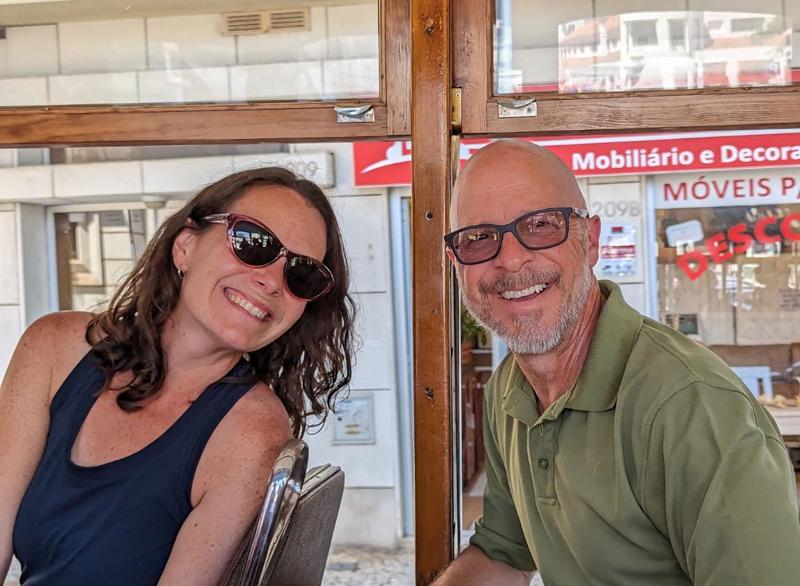Sabbatical Journey
We flew from one edge of Europe to the other to arrive in Lisbon, Portugal. We rented a car for the few weeks we are here, which took a little bit of reminding ourselves how to drive and navigate on our own! Lisbon is a lovely city along the Tagus River and abutting the Atlantic Ocean. We were excited to embrace a slower pace of travel and no agenda. This meant slower mornings, runs along the river (for Miriam), trips to the gym, sampling local food and beverages (often without really knowing what we were ordering), meandering walks through the city, and just letting the days take us where they would. We watched the Rick Steeve's episode about Lisbon (and also one about northern Portugal) and so much of our interests were built around his suggestions. We joked that after following in Paul's footsteps in Turkey, in Portugal we were following in Rick's footsteps.
The architecture of Lisbon is quite unique. Narrow streets, often ornately decorated with cobblestone designs, lead to big squares and promenades, but also windy neighborhoods. Azulejos tiles adorn church and apartment facades. Much of the city was rebuilt after a huge earthquake in 1755 and a subsequent tsunami which killed a third of the population and decimated the city. Out of the destruction came a planned city with architectural code to both prevent collapse from future earthquakes and provide a grid system and standards for aesthetics of the city. The grandeur of the city was built with the wealth and plunder of the former colonial powerhouse days of Portugal. One day we took the 28 tram from beginning to end, which was a wonderful chance to see different neighborhoods, including part of the Alfama which survived the quake with it's narrow, bustling streets and heavy foot traffic leaving inches of space between the tram and everything below.
One day from Lisbon we ventured to the mountain "resort" town of Sintra. A monastery dating to around 1500 marked a holy site in Portugal and was revered by the Portuguese monarchs for generations. In the early 1800s, King Ferdinand II decided to acquire the monastery and nearby Moorish Castle, and then convert the area into a summer palace for the monarchy. The resulting Palacio da Pena looks like no other castle I've
Lisbon
Lisbon, Portugal
We flew from one edge of Europe to the other to arrive in Lisbon, Portugal. We rented a car for the few weeks we are here, which took a little bit of reminding ourselves how to drive and navigate on our own! Lisbon is a lovely city along the Tagus River and abutting the Atlantic Ocean. We were excited to embrace a slower pace of travel and no agenda. This meant slower mornings, runs along the river (for Miriam), trips to the gym, sampling local food and beverages (often without really knowing what we were ordering), meandering walks through the city, and just letting the days take us where they would. We watched the Rick Steeve's episode about Lisbon (and also one about northern Portugal) and so much of our interests were built around his suggestions. We joked that after following in Paul's footsteps in Turkey, in Portugal we were following in Rick's footsteps.
The architecture of Lisbon is quite unique. Narrow streets, often ornately decorated with cobblestone designs, lead to big squares and promenades, but also windy neighborhoods. Azulejos tiles adorn church and apartment facades. Much of the city was rebuilt after a huge earthquake in 1755 and a subsequent tsunami which killed a third of the population and decimated the city. Out of the destruction came a planned city with architectural code to both prevent collapse from future earthquakes and provide a grid system and standards for aesthetics of the city. The grandeur of the city was built with the wealth and plunder of the former colonial powerhouse days of Portugal. One day we took the 28 tram from beginning to end, which was a wonderful chance to see different neighborhoods, including part of the Alfama which survived the quake with it's narrow, bustling streets and heavy foot traffic leaving inches of space between the tram and everything below.
One day from Lisbon we ventured to the mountain "resort" town of Sintra. A monastery dating to around 1500 marked a holy site in Portugal and was revered by the Portuguese monarchs for generations. In the early 1800s, King Ferdinand II decided to acquire the monastery and nearby Moorish Castle, and then convert the area into a summer palace for the monarchy. The resulting Palacio da Pena looks like no other castle I've

seen, with it's bright colors, tiled walls, and intricate artwork. On our journey back to Lisbon, we stopped at Cascais, a small coastal city with an artistic sensibility and beautiful outdoor spaces. Another day we took a day trip to a nearby beach to just have some time to relax!




1.
Foreword
2.
The Itinerary
3.
Packing
4.
Cairo - Part 1
5.
Cairo - Part 2
6.
Sites of Ancient Egypt
7.
Egyptian Temples
8.
Valley of the Kings
9.
Egyptian Culture and Final Thoughts
10.
From Egypt to Morocco
11.
Northern Morocco
12.
Water and Climate Issues
13.
Cultural Capital of Morocco
14.
The Sahara Desert and Atlas Mountains
15.
The Road of 1000 Kasbahs and onto Marrakech
16.
A Wee Break in Londontown
17.
Malawi - First Impressions
18.
BEE World Pastor's Course
19.
Malawi’s National Parks
20.
Zomba Plateau
21.
Malawi, a Retrospective
22.
Plant with Purpose Tanzania
23.
Tanzania Safari
24.
Safari Animal Sighting List
25.
Enchanting Istanbul
26.
Classical Turkey & the Aegean Coast
27.
Cappadocia
28.
Lisbon
29.
Portugal's Heartland
30.
A Rocha Visit and the Southern Coast of Portugal
31.
Welcome
32.
Looking Back and Moving Forward
33.
...and home!
Share your travel adventures like this!
Create your own travel blog in one step
Share with friends and family to follow your journey
Easy set up, no technical knowledge needed and unlimited storage!
© 2025 Travel Diaries. All rights reserved.